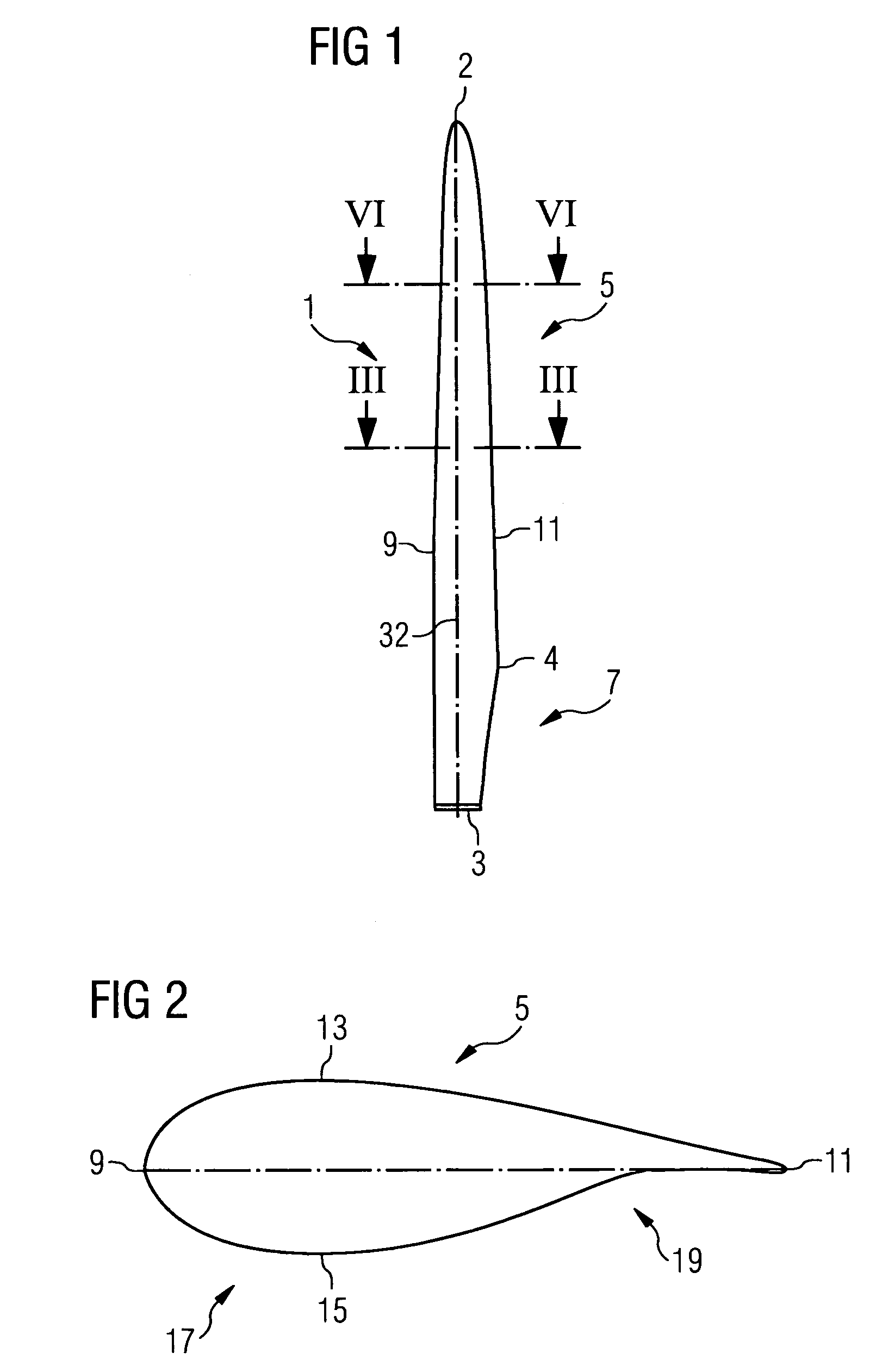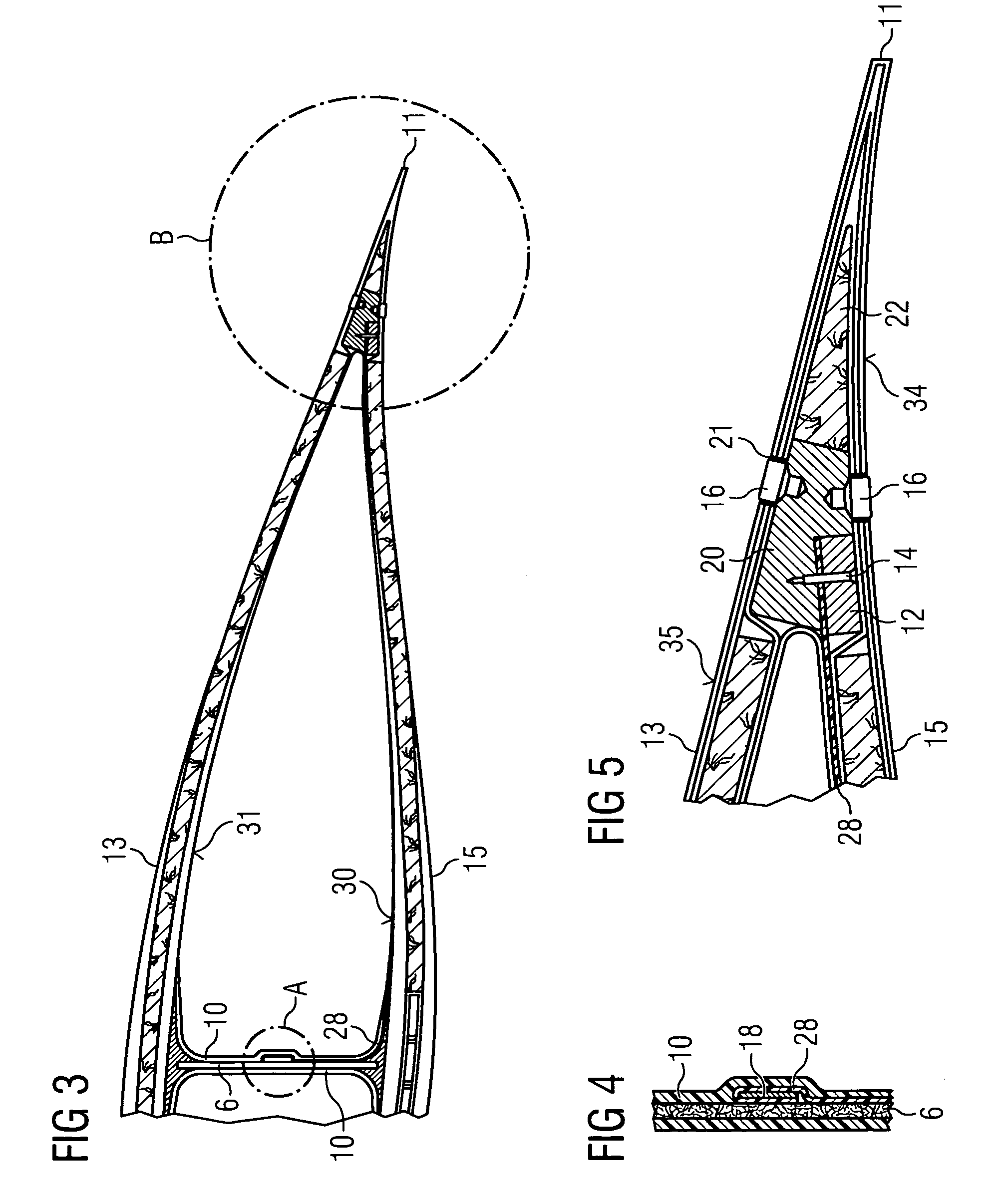Method for manufacturing wind turbine blade with an integrated lightning conductor
a technology of lightning conductor and wind turbine blade, which is applied in the manufacture of final products, machines/engines, forging/pressing/hammering apparatus, etc., can solve the problems of both the blade structure and the conductor cables themselves, and achieve the effect of reducing mechanical stresses on the conductor and being readily integrated
- Summary
- Abstract
- Description
- Claims
- Application Information
AI Technical Summary
Benefits of technology
Problems solved by technology
Method used
Image
Examples
Embodiment Construction
[0058]An embodiment of the present invention will now be described in detail with reference to FIGS. 1 to 14.
[0059]FIG. 1 shows a rotor blade in a plan view on the plane defined by the blade's span and the blade's chord. FIG. 1 shows a wind turbine blade 1 as it is usually used in a three-blade rotor. However, the present invention shall not be limited to blades for three-blade rotors. In fact, it may as well be implemented in rotors with more or less than three blades, e.g. two-blade rotors. The centreline of the blade 1 is indicated by reference numeral 32.
[0060]The rotor blade 1 shown in FIG. 1 comprises a root portion 3 with a cylindrical profile and a tip 2. The tip forms the outermost part of the blade. The cylindrical profile of the root portion 3 serves to fix the blade to a bearing of a rotor hub. The rotor blade 1 further comprises a so-called shoulder 4 which is defined as the location of its maximum profile depth, i.e. the maximum chord length of the blade. Between the s...
PUM
| Property | Measurement | Unit |
|---|---|---|
| distance | aaaaa | aaaaa |
| distance | aaaaa | aaaaa |
| shape | aaaaa | aaaaa |
Abstract
Description
Claims
Application Information
 Login to View More
Login to View More - R&D
- Intellectual Property
- Life Sciences
- Materials
- Tech Scout
- Unparalleled Data Quality
- Higher Quality Content
- 60% Fewer Hallucinations
Browse by: Latest US Patents, China's latest patents, Technical Efficacy Thesaurus, Application Domain, Technology Topic, Popular Technical Reports.
© 2025 PatSnap. All rights reserved.Legal|Privacy policy|Modern Slavery Act Transparency Statement|Sitemap|About US| Contact US: help@patsnap.com



